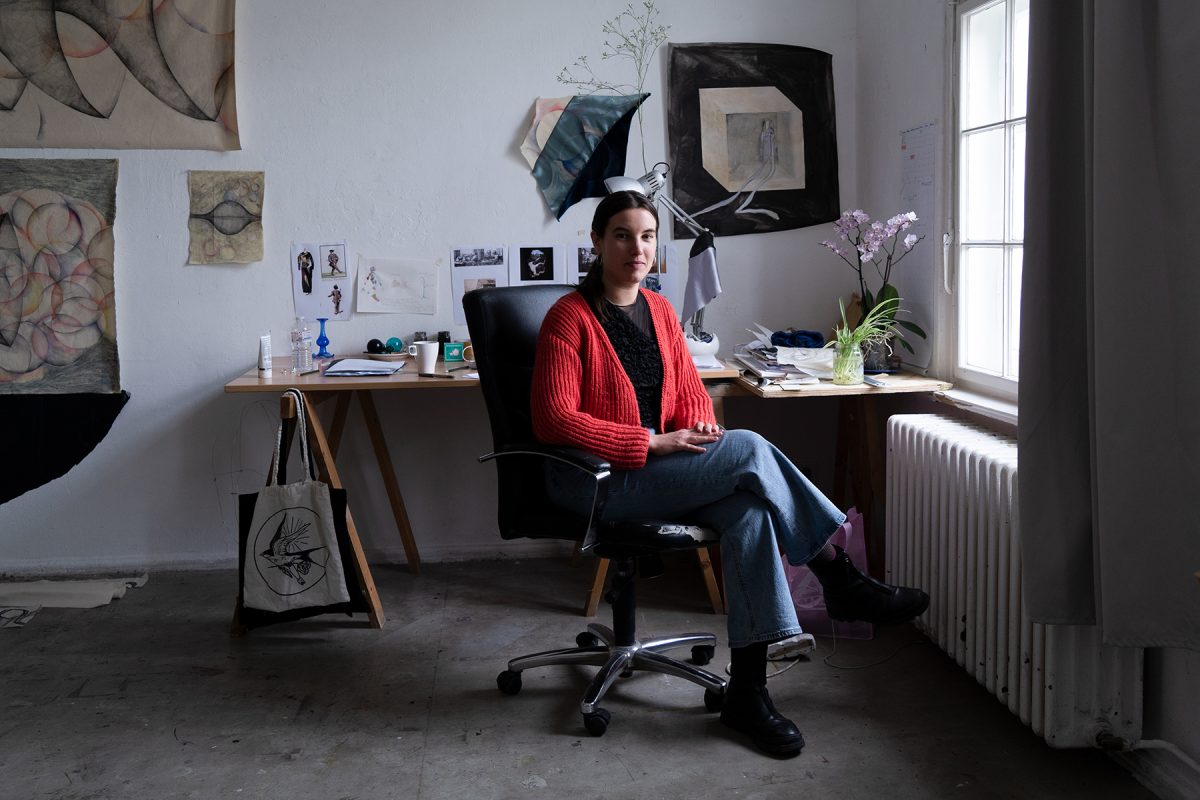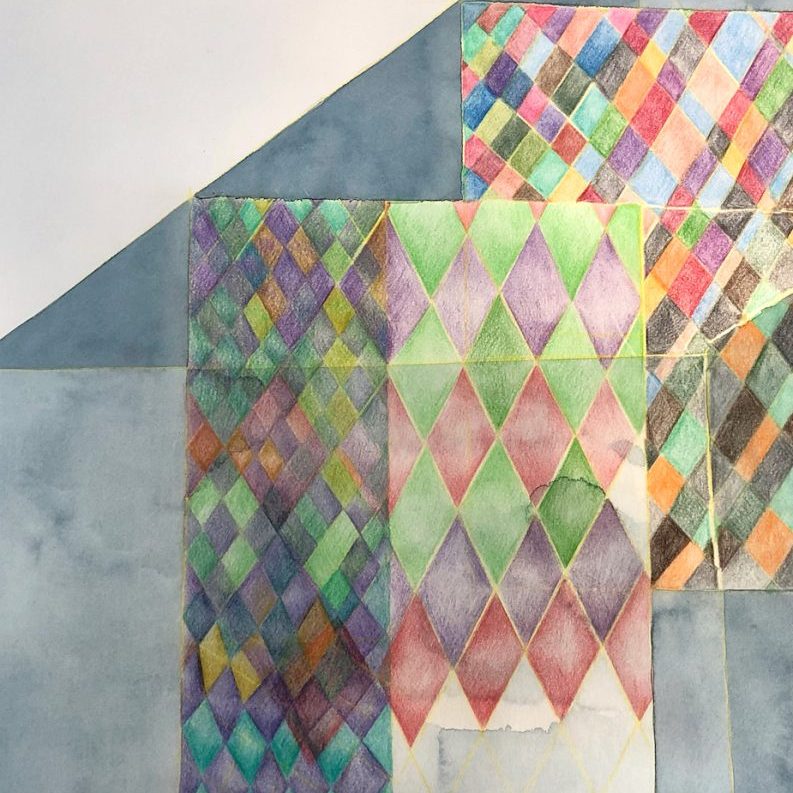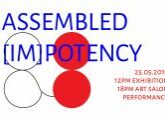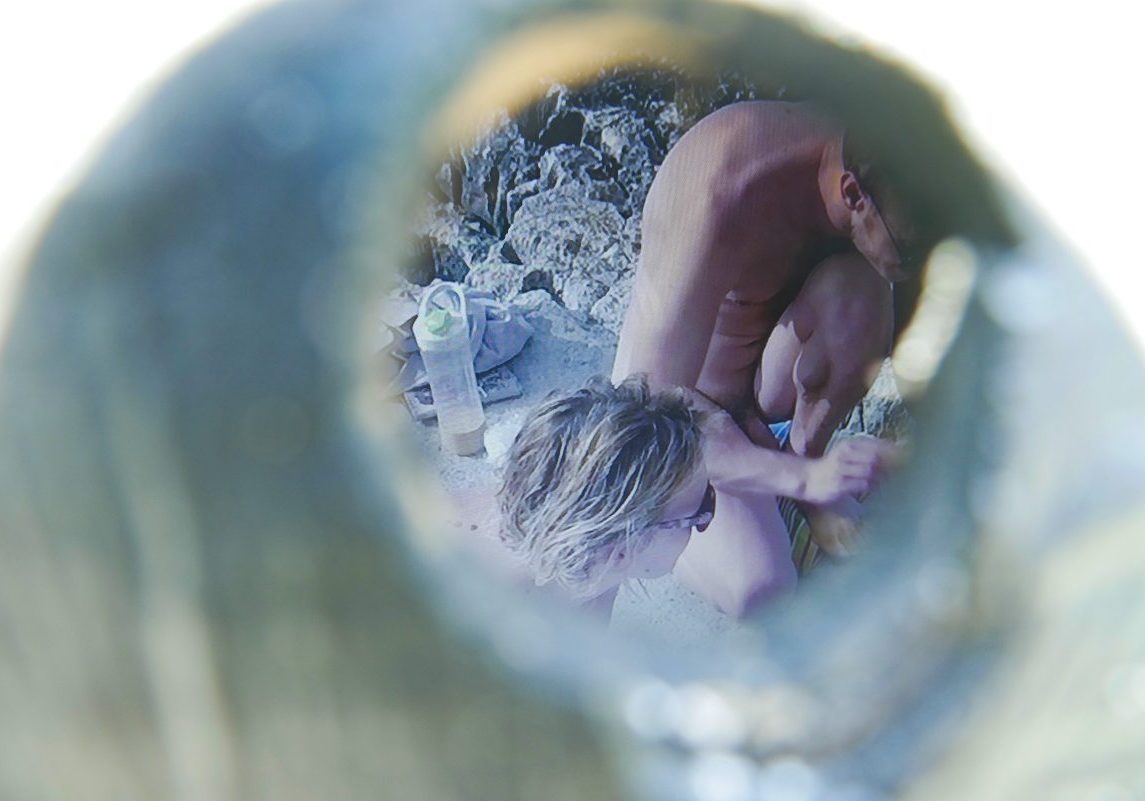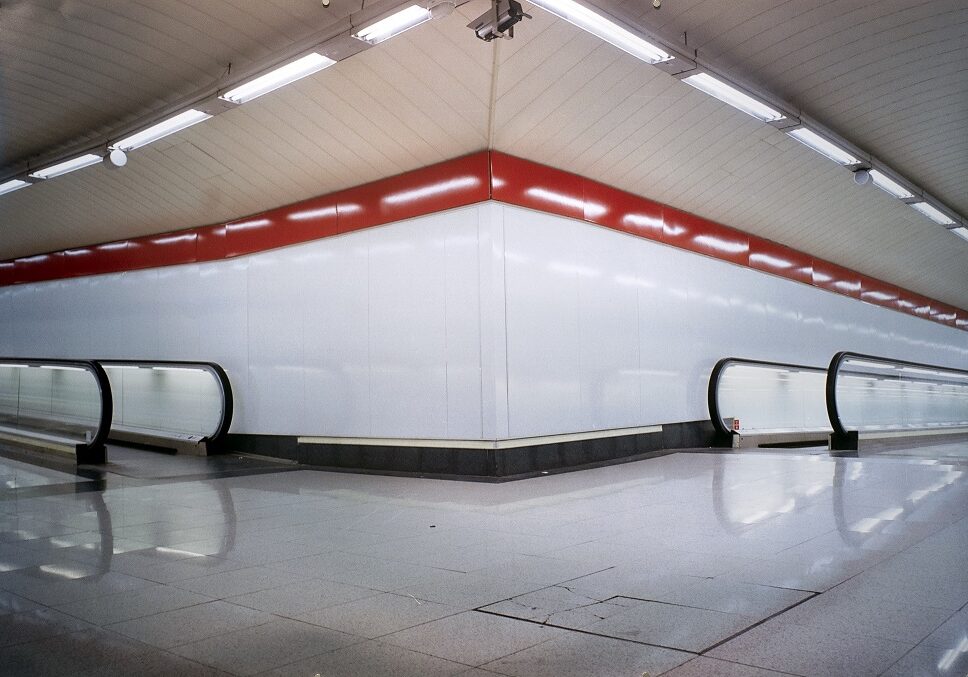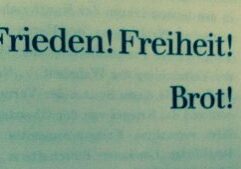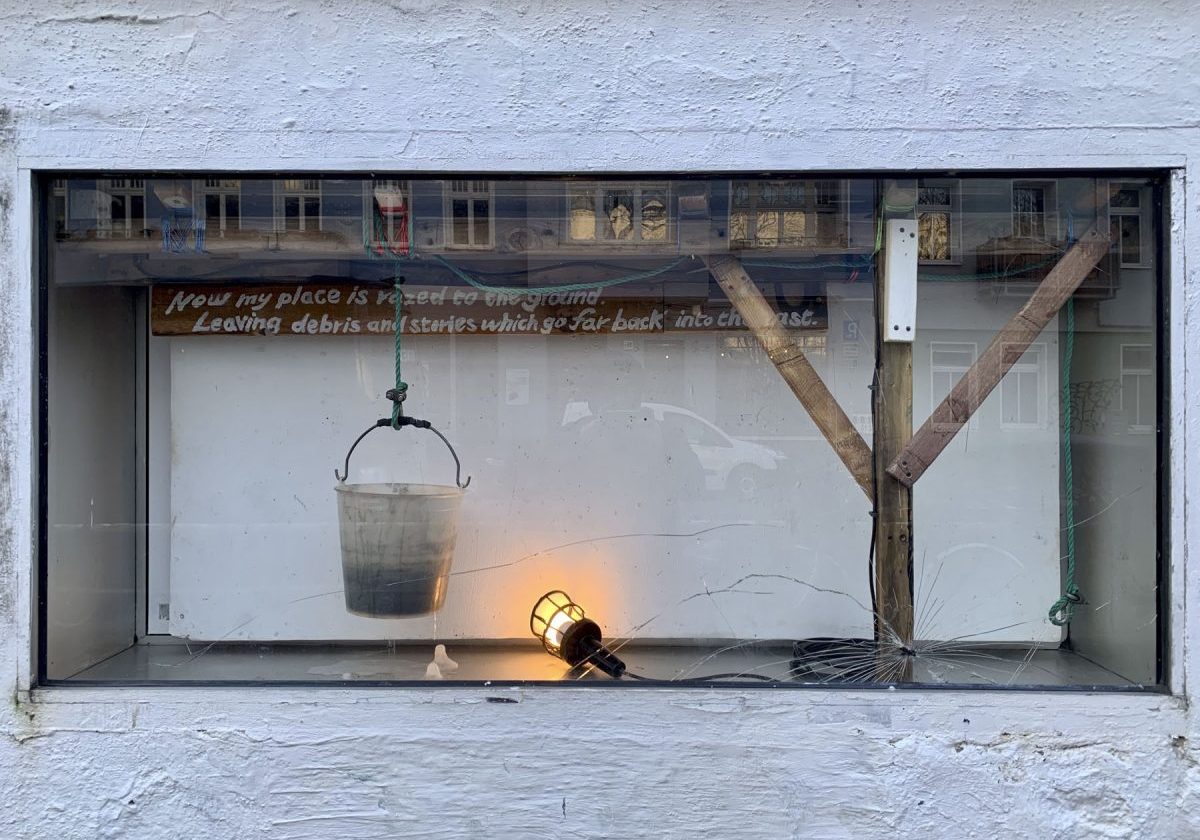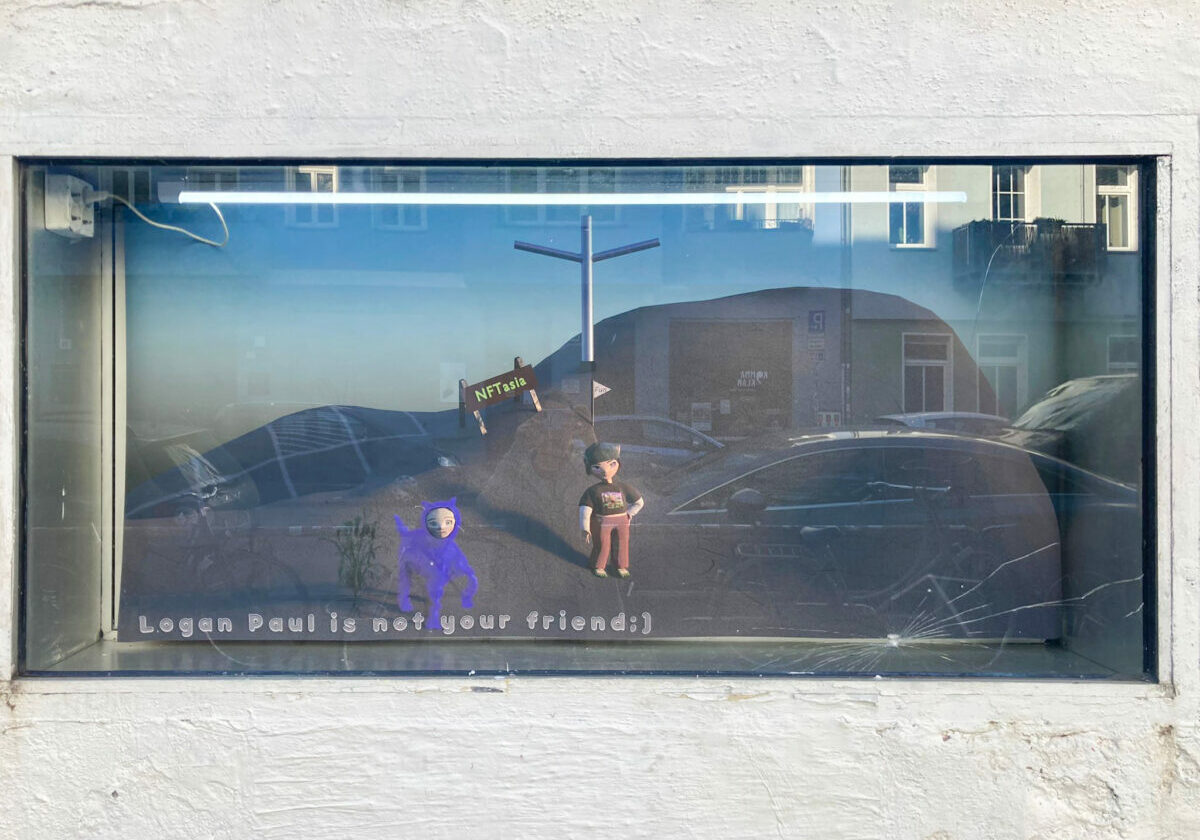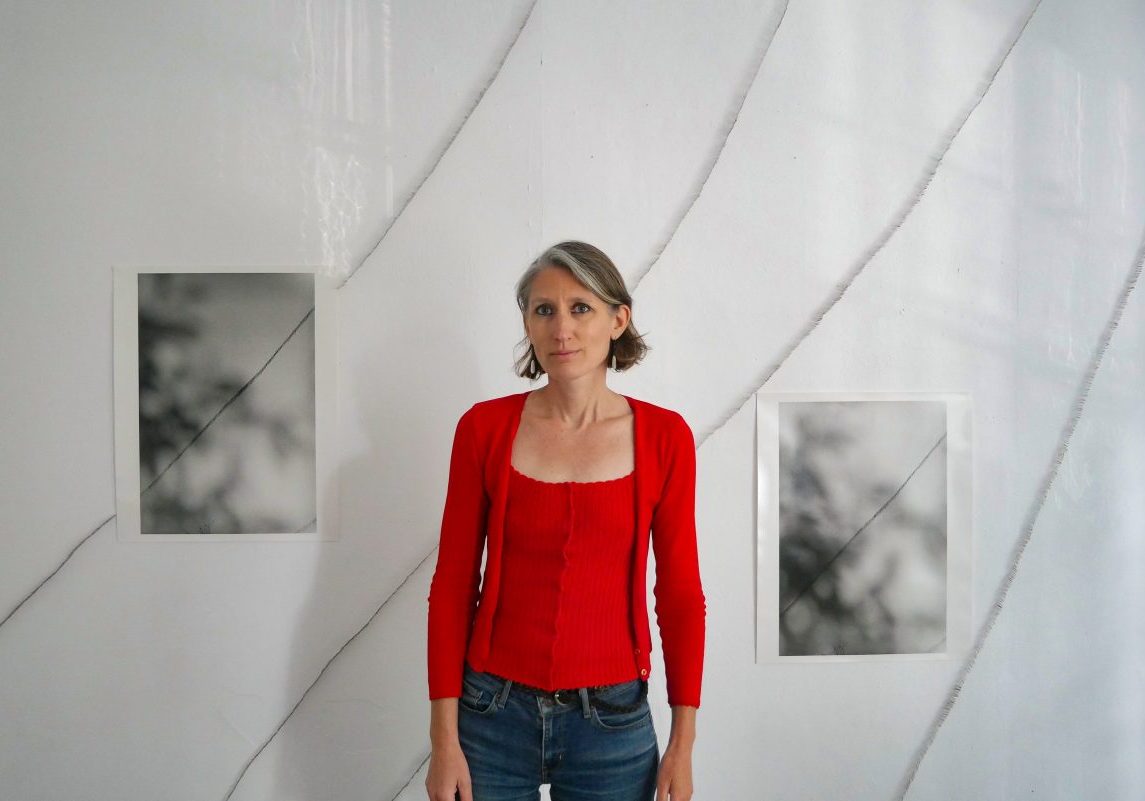Meet the Artist // Elisa Pardo Puch
Elisa Pardo Puch intertwines autobiographical narratives with contemporary social contexts, encapsulating them within the spatial confines of her artworks. Employing techniques like drawing and sewing, she navigates an intuitive, repetitive, and meticulous process, infusing tension between industrial and artisanal elements.
Through geometric motifs and meticulous lines, often within a grid framework, Pardo Puch delves into moments of repetition and insistence, finding a meditative space where ideas flow freely, viewing the process itself as a channel for creative expression.
How would you describe your practice as an artist?
My name is Elisa Pardo Puch. I’m from Madrid, and I studied graphic design, fine arts, and have a Master’s degree in contemporary art history. My current practice revolves around developing a unique visual language that I express through drawing and research.
In my work, there’s this ongoing tension between two-dimensionality and space. Even though my creations are typically flat, I’m always thinking as if I’m a pretend architect or sculptor, trying to give them depth and structure.
Right now, I’m focused on finding what is constant in my work. A key aspect of my practice is starting small and building larger pieces from these smaller parts. This approach involves repetition, both in terms of the formal aspects and the concepts. I start with simple, repeated elements, which then expand to form a larger body of work.
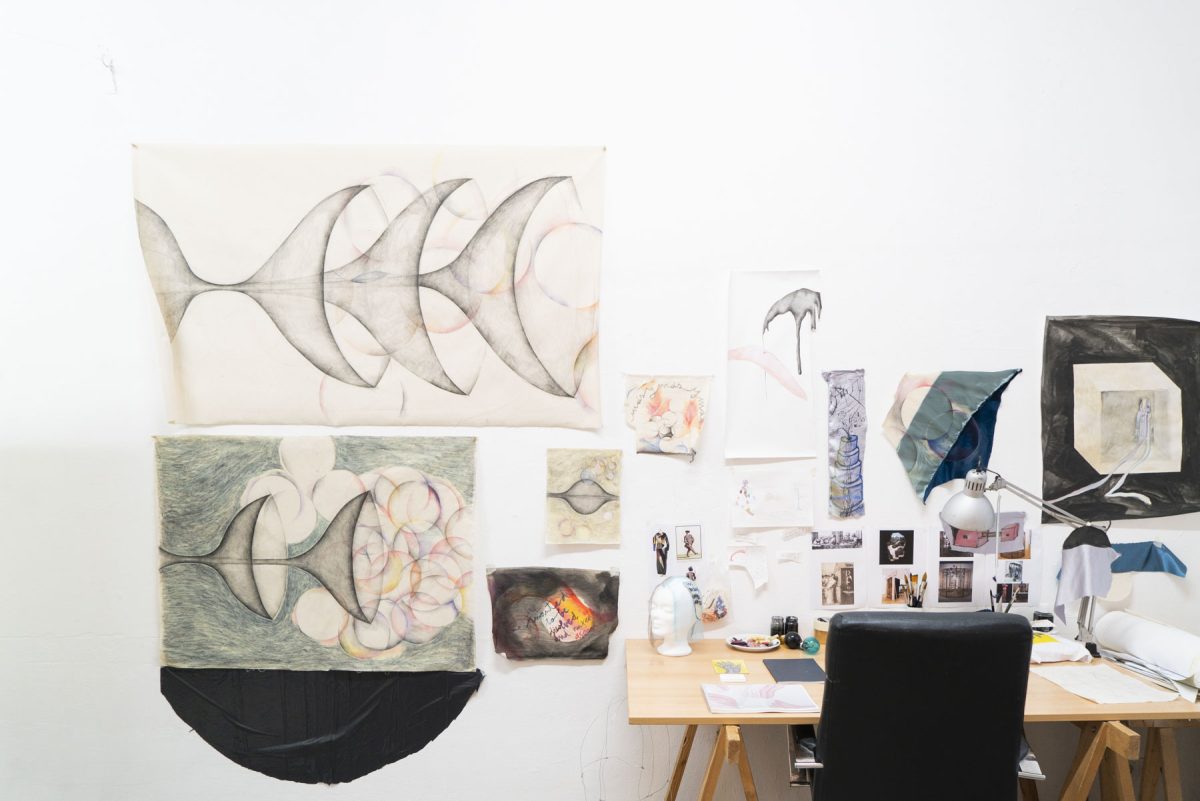
The process of repetition doesn’t only apply to the art itself—it also influences my physical movements while I work. The act of creating becomes a repetitive motion, with patterns that reinforce the overall theme.
In my practice, I approach projects from both sides: sometimes starting with a concept, and other times beginning with the medium. Some projects start from a small story—something personal or autobiographical—that I don’t fully understand, and I work through it by giving it space, using my body, hands, and various materials to process it. However, most of my work focuses on the interaction with materials, approaching it in an abstract way, exploring shapes, and working instinctively.
What inspires your work?
A lot of things inspire my work. I often draw from older artistic movements like Dadaism and Avant-Garde. I’m also influenced by the Arts and Crafts movement from the 19th century, which focused on creating a whole universe from a single idea.
Currently, I’m interested in textile art and often look at artists like Aurelia Muñoz for inspiration. But my influences aren’t limited to traditional art forms—I also find inspiration in crafts from various cultures and time periods, particularly textiles. I find the creative techniques used across different ages and regions very interesting, and they often spark ideas for my own work.
How did your artistic journey begin?
My artistic journey started when I was a child. Drawing was always my way to express myself—to create something from my imagination. It was an easy way to play and to share my ideas and desires.
I continued to draw as I grew older, eventually studying graphic design and then fine arts. The progression felt natural to me. It wasn’t like I suddenly decided, ‘I want to be an artist.’ It was more like everything led me to this path slowly and naturally.
I always knew I wanted to do something creative, and I always enjoyed drawing. There wasn’t a specific moment when I decided to become an artist; it just felt like a natural progression. I even tried studying architecture, but then I realized that what I liked about architecture was the technical drawing, so I knew my path was in art.
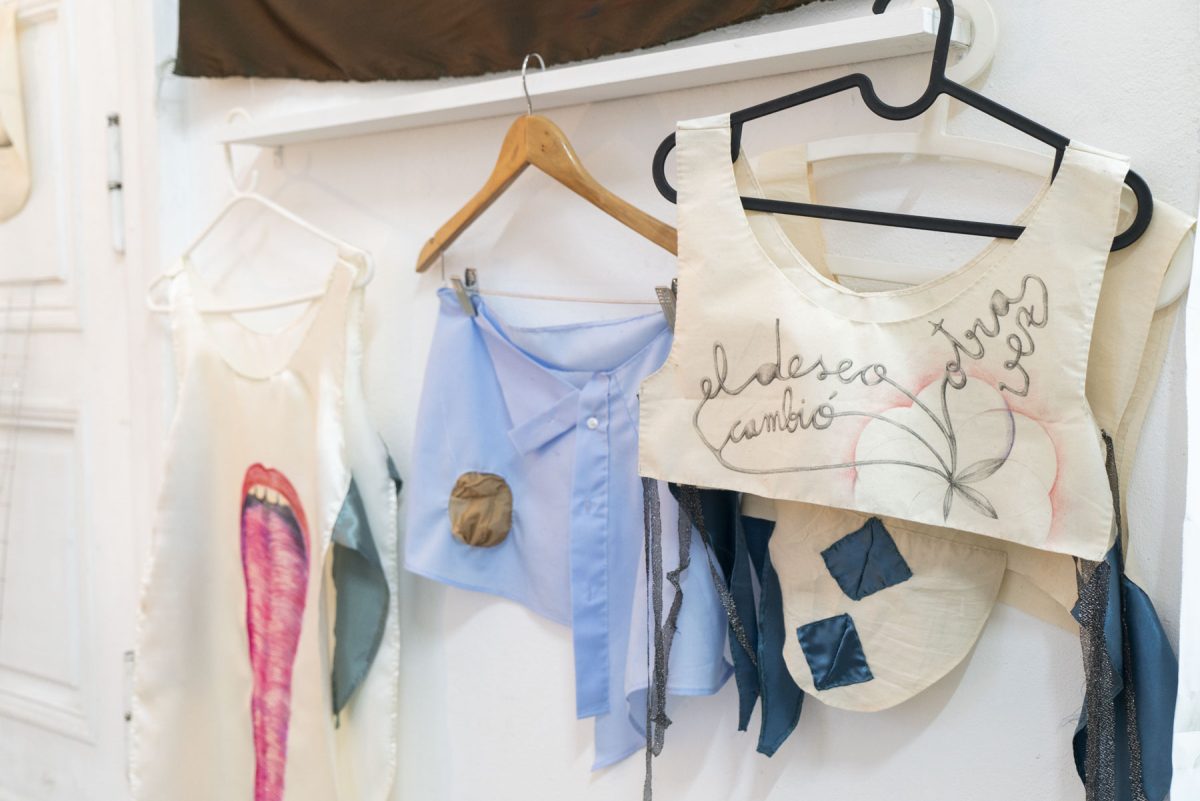
Do you have any memorable anecdotes from your artistic journey that had a lasting impact on you?
I’m not sure if there’s a single specific anecdote, but something that really impacted me happened fairly recently. I realized how important it is to be part of an artist community, to be surrounded by people who share similar challenges and experiences.
Being part of a community made me feel more secure in my decision to be an artist. When I found a group of people who understood my worries about art and who could relate to the struggles of living and working as an artist, it made a big difference.
In my case, it all started when I began sharing a studio. Once I had those conversations and connections, I knew it was crucial to stay involved. Being an artist can be ultra frustrating and ultra precarious sometimes, so having a support network reassured me that I was on the right path.
I cannot think about any specific memory, nothing really stands out as special. I guess it’s more about the great conversations I’ve had and the friends I’ve made along the way.
It’s not just about sharing art experiences; it’s more like a lifestyle. The studio becomes a place where you live, work, and connect with people. That’s what makes it special, even if there’s not one particular story to tell.
How do you see your artwork and yourself in the contemporary art world today and in the market?
I know I fit in the contemporary art world because my work has a unique voice that speaks to modern themes. My art finds its place in the contemporary market because I’m working with a gallery and actively seeking opportunities from institutions. These connections provide the resources I need to keep creating, since I don’t make much money from my art yet.
I’m committed to this path because I want art to be my main focus in life. To make that sustainable, I need a way to cover basic needs like housing and food, which is why I’m working with a gallery and applying for different grants or programs. It’s a priority for me to make a living from my art, so I’m trying to find ways to make that happen.
Although my work isn’t strictly textile, it’s inspired by it. I approach my art as if I were a seamstress, with a focus on creating and stitching together elements, even if my medium is mostly plastic. This inspiration from textile work and the emphasis on drawing shape my place in the contemporary art world, even if I don’t have all the answers yet
Do you think the city of Berlin is having an impact on your work?
Yes, definitely yes. Berlin has had a big impact on my work. When I first arrived, it was winter, and it was horrible. But in a way, it was a gift, because it kept me in the studio the whole time, allowing me to be ultra-focused on my work.
Being in this residency in Berlin has given me the chance to really rethink a lot of things. It provided the time and space I needed to pause, reflect, and consider where I want to go with my art.
Is this residency and the fact that you are living with 13 other artists having an impact on your production?
As I mentioned, the most important thing is being with other artists. The residency has provided me with a lot of growth opportunities. I’ve learned a lot from other artists in this and other residencies. I’ve been in three residencies before, and it’s amazing to see how different each artist’s practice is.
It’s interesting to see how different artists approach their work and the various perspectives they have on the same subject. Residencies offer this kind of unique insight. They give you an intense period to really focus on your work, which I consider a privilege.
Specifically, how do the 13 other artists here influence my work?
I don’t know if I can talk about it yet. It’s something that requires time to understand and process. I don’t know exactly how it influences me, but I’m sure it does, and I might realize it later on.
Currently, I’m immersed in the experience, and it’s very emotional, which makes it challenging to reflect on. But without a doubt, the attitudes of some artists, the way they engage with their workspaces, and how some are involved in social art, have an impact on me. It makes me rethink my own approach, as I’m not usually as direct. It makes me consider how different types of artists play a role in our society.
And what are your plans after GlogauAIR?
I don’t have specific plans yet. My focus is on applying for more residencies, and I might also consider studying something new. I think I need to find a way to balance my time between practice and other activities, like education or teaching. The goal is to make my work sustainable.
Right now, I’m concentrating on my upcoming exhibition, which is happening in one month. It’s a solo exhibition in Madrid with my gallery. After that, I might have some projects in autumn, but they are not completely set. So, for now, I’ll continue looking for more opportunities and see where it takes me.
